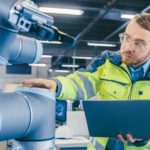 It’s never been entirely clear that society wants our robotic companions to be too lifelike, but that has not stopped researchers attempting to do just that. The latest effort comes from research from Imperial College London, which argues that combining research disciplines can help in this endeavor.
It’s never been entirely clear that society wants our robotic companions to be too lifelike, but that has not stopped researchers attempting to do just that. The latest effort comes from research from Imperial College London, which argues that combining research disciplines can help in this endeavor.
The researchers argue that combining mechanical engineering, materials science, computer science, chemistry, and biology in a single teaching discipline would provide students with the skills needed to make lifelike robots.
Physical AI
It’s a concept the researchers refer to as “Physical AI”, and suggests that robots should be designed to look and act like humans (or other animals). They believe these robots will work alongside us, performing various tasks that are usually considered too dangerous for humans, whether in construction, industry, or healthcare.
The researchers argue that to date, there have been no autonomous robots that have been able to interact with both their surrounding environment and with human beings in the same way that existing computer-based AI is able to.
“The development of robot ‘bodies’ has significantly lagged behind the development of robot ‘brains’,” they explain. “Unlike digital AI, which has been intensively explored in the last few decades, breathing physical intelligence into them has remained comparatively unexplored.”
The researchers suggest that this gap is in part because no systematic educational approach exists to create robot bodies and brains in a holistic way.
Skills gap
The researchers identified five key disciplines that they believe will help to develop Physical AI: materials science, mechanical engineering, computer science, biology, and chemistry.
“The notion of AI is often confined to computers, smartphones and data intensive computation,” they explain. “We are proposing to think of AI in a broader sense and co-develop physical morphologies, learning systems, embedded sensors, fluid logic and integrated actuation. This Physical AI is the new frontier in robotics research and will have major impact in the decades to come, and co-evolving students’ skills in an integrative and multidisciplinary way could unlock some key ideas for students and researchers alike.”
To progress the idea will require, the researchers propose, the provision of support to teachers at both the community and institutional level so that this multidisciplinary approach is covered.
“Such backing is especially needed as working in the multidisciplinary playground requires daring to leave the comfort zones of narrow disciplinary knowledge for the sake of a high-risk research and career uncertainty,” they conclude. “Creating lifelike robots has thus far been an impossible task, but it could be made possible by including Physical AI in the higher education system. Developing skills and research in Physical AI could bring us closer than ever to redefining human-robot and robot-environment interaction.”